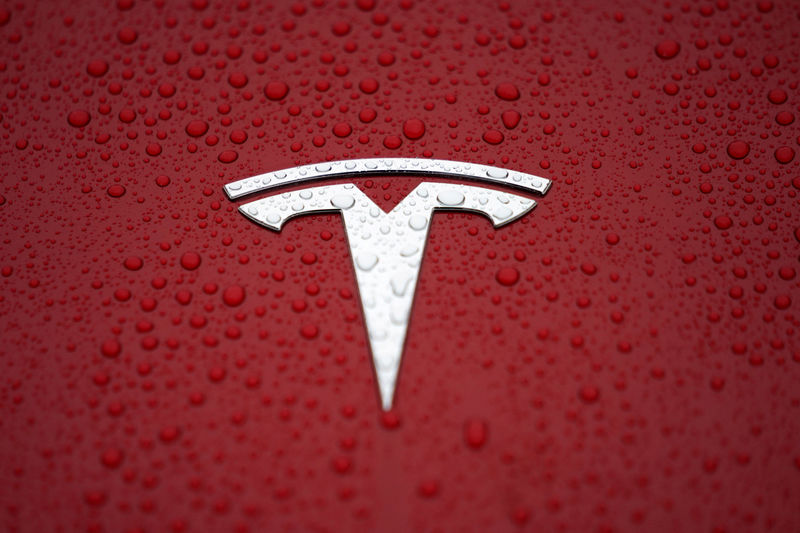By Michael Elkins
Elon Musk and Tesla (NASDAQ:TSLA) held their 2023 investor day today. Musk opened with a presentation focused on creating a future with sustainable energy.
According to the presentation, in the current combustion energy-based economy, 80% of global energy comes from fossil fuels. However, only 1/3rd of global energy is converted to use for work or heat.
Elon Musk stated during the presentation, “The thing that is needed at a very large scale, that is not currently present, is a vast amount of battery energy storage.” Tesla calculates that the plan needs roughly 240TWh of storage. “This is a lot of batteries, but actually a very achievable amount,” Musk continued
The storage needed for Musk’s plan uses a combination of electric vehicles and stationary storage to create an approximately 8-1 ratio of stored vs. active power (30TW of active power). The company estimates that the capital expenditure in manufacturing investments for this venture is around $6 trillion. However, they conservatively raised the estimate to $10T.
“This is not a big number relative to the global economy,” said Musk. “If you look at the total world economy, it’s just under $100 trillion. So, if this was spread out over 10yrs it would be 1% of the global economy. Over 20yrs it would be 12%.”
The manufacturing investment covers everything from mining and refining resources, to building factories and recycling. “An electric economy will require less mining than our current economy does,” Musk added.
The five areas of work to eliminate fossil fuels as described during the event are: Renewably powering the existing grid, switching to electric vehicles (EVs), switching homes and businesses to heat pumps, creating high-temp delivery and storage for hydrogen, and sustainably fueling planes and boats.
Musk said, "In 2022, 60% of the power generated for the grid was solar and wind. On a YoY basis, solar deployment is growing 50%. Showing that the plan to power the grid using renewable energy is already under way, and closer than we might think." Musk and Tesla estimate that their plan will utilize less than 2% of global land area.
“It doesn’t need to displace homeland or forests or jungle or any kind of ecological preserve. It can be used in very sparsely populated desert regions. There’s essentially no meaningful ecological impact. In fact, transition to a sustainable energy economy would result in a substantial reduction in current ecological impact.”
By switching entirely to EVs, Tesla estimates a 21% reduction in fossil fuel use. Overall EV production grew 59% YoY in 2022, and EVs hit 10% of market share. “This is obviously happening very rapidly,” said Musk. “Really, all cars will go to fully electric and autonomous. Riding a non-autonomous gasoline car is going to be an allegory for riding a horse or using a flip phone.”
Currently, heat pumps meet 10% of building heating needs with install rates growing 10% YoY. The plan is for heat pumps to replace the common fossil fuel furnace, reducing the energy needed to deliver heat to homes and businesses by 300%. “At some point, we might make heat pumps for homes,” Musk joked.
He added, "Green hydrogen is needed to decarbonize metals and for chemical refining processes. There is roughly 120 million tons of hydrogen sourced from fossil fuels to do these things. Hydrogen can also directly replace coal which is currently used in most steel production. Through a process that calls to directly reduce iron, we can replace blast furnaces with hydrogen directly reducing iron furnaces, effectively eliminating fossil fuels from this portion of the economy, as well as the CO2 associated with them."
The last part of the plan involves sustainably fueling planes and boats. Tesla estimates the industry will need roughly 44TWh of vehicle battery and stationary storage as well as 4TWh of solar and wind energy to accomplish this goal.
“To really get long-range aircraft to long-range shipping to use lithium ion, you need to redesign the ship or plane to really take advantage of the new energy,” Musk said. “Just like with an electric car, you wouldn’t just take a gasoline car and stick a battery in it. That’s very suboptimal. It’s much more efficient for the battery to be the structure of the car.”
“If that’s done with aircraft, I think you can get long range aircraft with cells at around 450Wh/kg.”
If all goes according to plan, Musk and Tesla estimate that a sustainable energy economy could be achieved by 2050.
Shares of TSLA closed the trading day down 1.43% on Wednesday.
